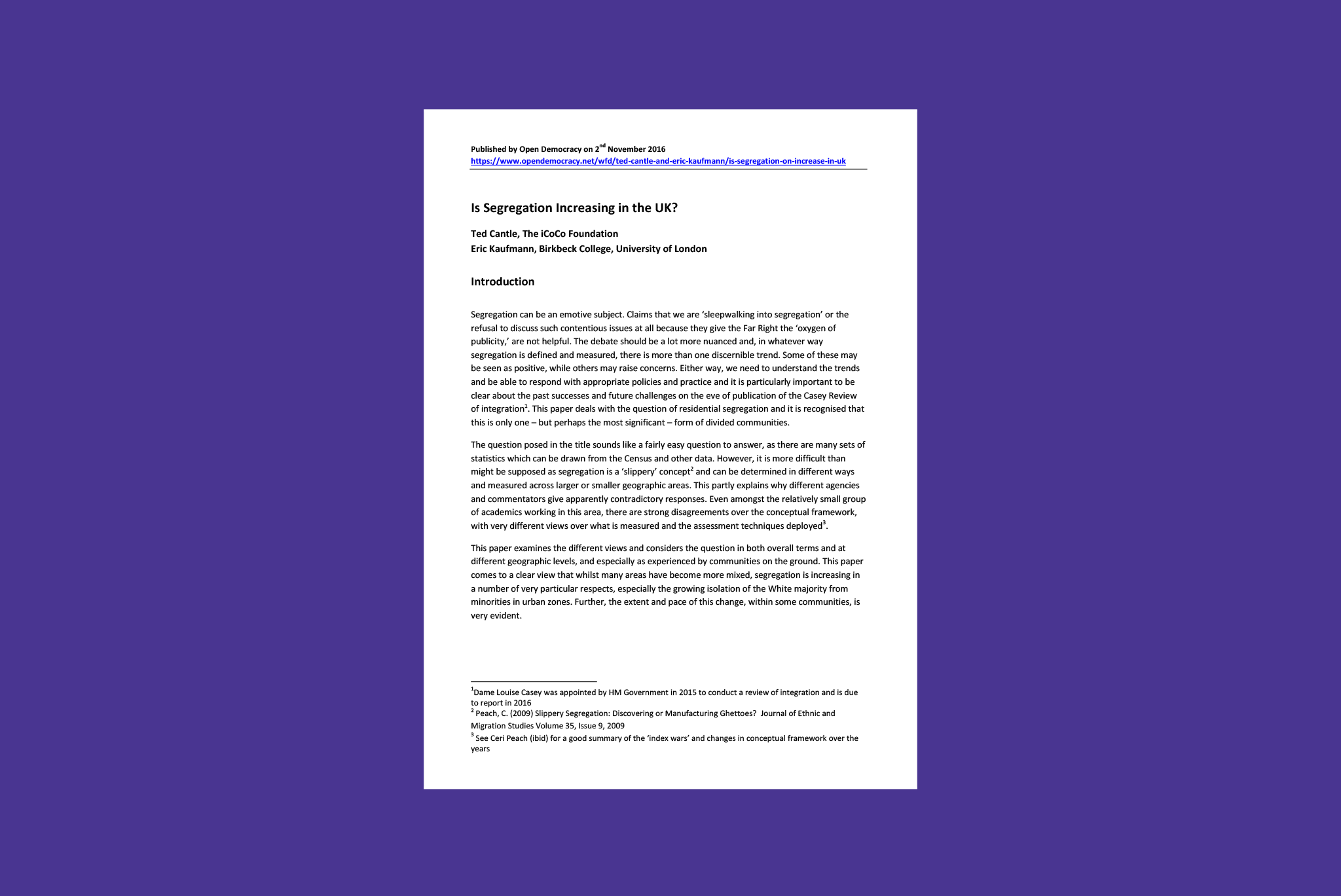Research and resources on social cohesion theory and best practice.
The Belong Network Library
Research and resources on social cohesion theory and best practice.
Research and resources on social cohesion theory and best practice.
Research and resources on social cohesion theory and best practice.
The Belong Library is free to access and brings together a wide range of online resources produced by the public, private and civil society sectors to build the evidence base around social cohesion.
It is regularly updated and includes:
Please contact us if you are unable to find what you need – we’d be delighted to help.

This report highlights the opportunities presented by the election of new mayors for six city-regions across England. The report argues that the new mayors are in an excellent position to further integration in their cities, and provides recommendations for approaches and activities for each of the cities – covering everything from appointing a deputy mayor for integration, to building more affordable housing.

This is a contemporary analysis looking at race and class following the EU referendum and the beginning of BREXIT. It’s published by the Runnymede Trust and draws on the work of authors and commentators who provides some pointed insights into the role played by race and class in post EU referendum discord.

This study, carried out by the iCoCo Foundation, SchoolDash and The Challenge, sets out to understand how segregated schools are according to socio-economic status and ethnicity, and to evaluate these trends over a five-year period.

Report from the Inter Faith Network looking at contributions faith communities and inter faith groups make to community cohesion. Issues explored include compassion, dialogue, accessibility, intergenerational activity, equality, diversity, and social media.

The Casey Review is an extensive review of integration carried out by Dame Louise Casey in 2016. The report identifies high levels of segregation, isolation and inequalities in communities and makes detailed policy recommendation.

In this video, we hear from children who have been forcefully displaced, travelling unaccompanied, or becoming separated from their families, as they seek asylum abroad. An upsetting account that nonetheless reflects the realities of many of these children’s journeys. In 2017, 2,206 applications for asylum were made by Unaccompanied Asylum Seeker Children (UASC) in the UK.

Drawing on a survey of over 4,000 individuals, this report examined the extent of social interaction across ethnicity, age and socio-economic groupings in modern Britain, and compared results across different regions, including between London and the rest of the UK.

This paper looks at residential segregation in the UK. It provides an analysis of the data and finds that, although some areas have become more mixed, segregation is increasing in a number of ways. In particular, the authors find that, although more mixed residential areas are developing, segregation between the White British majority and minorities has become higher in certain areas. The research finds that minorities in some towns and cities are becoming more isolated from White British people, because of a decline in the White British population in these areas. The paper goes on to discuss some of the policy implications of this.

A short guide looking at what social action is and describing different approaches. Includes a glossary of key terms, which is useful for those planning social action initiatives. Provides a number of case studies of social action from around the UK.

This document outlines why England needs a strategy for ESOL and contains a range of proposals. It represents a consensus of views across a wide range of ESOL stakeholders, from practitioners and learners to awarding bodies and trade unions.